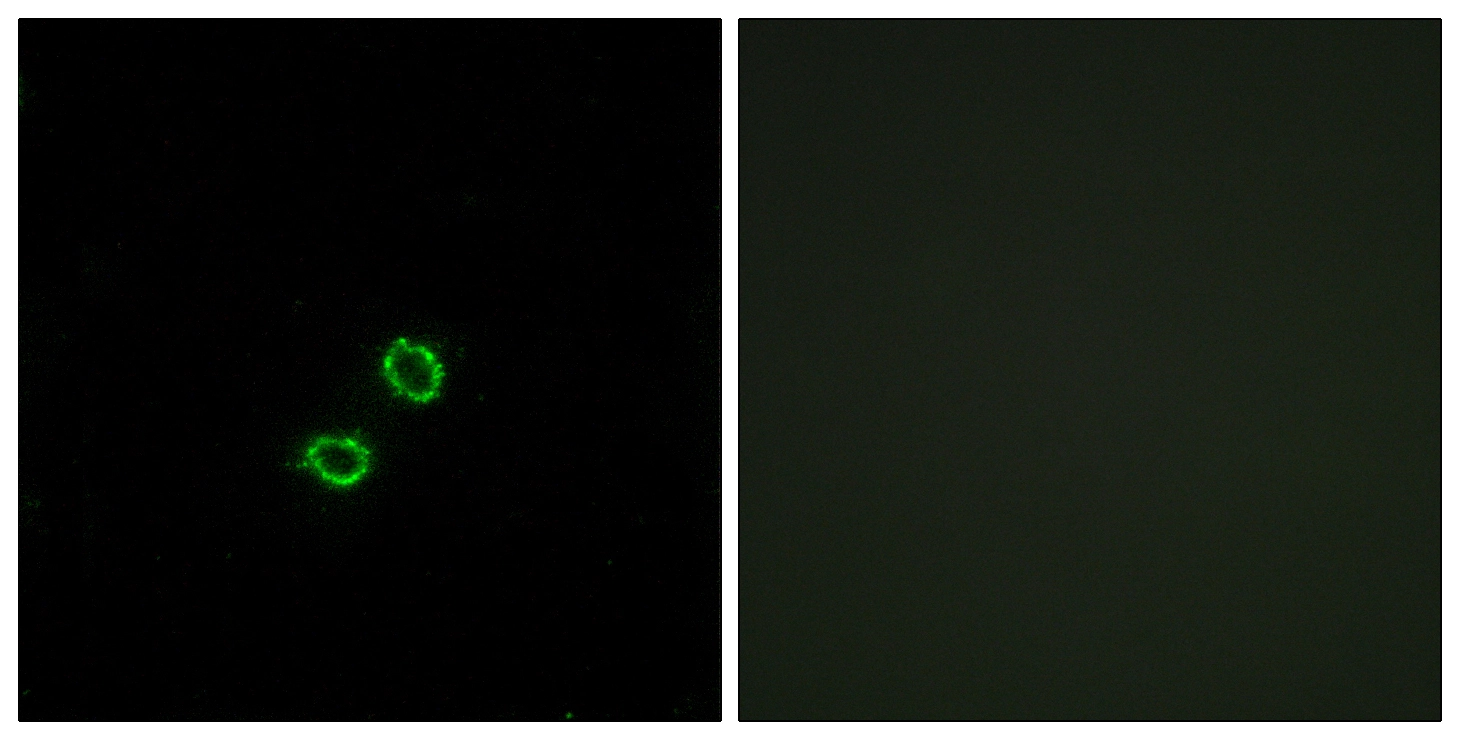
ICC/IF analysis of A549 cells using GTX87112 KIR2DL5B antibody. The picture on the right is blocked with the synthesized peptide.
KIR2DL5B antibody
GTX87112
ApplicationsImmunoFluorescence, ImmunoCytoChemistry
Product group Antibodies
ReactivityHuman
TargetKIR2DL5B
Overview
- SupplierGeneTex
- Product NameKIR2DL5B antibody
- Delivery Days Customer9
- Application Supplier NoteICC/IF: 1:100~1:500. *Optimal dilutions/concentrations should be determined by the researcher.Not tested in other applications.
- ApplicationsImmunoFluorescence, ImmunoCytoChemistry
- CertificationResearch Use Only
- ClonalityPolyclonal
- ConjugateUnconjugated
- Gene ID553128
- Target nameKIR2DL5B
- Target descriptionkiller cell immunoglobulin like receptor, two Ig domains and long cytoplasmic tail 5B
- Target synonymsCD158 antigen-like family member F2; killer cell immunoglobulin-like receptor 2DL5; killer cell immunoglobulin-like receptor 2DL5B; killer cell immunoglobulin-like receptor 2DLX; killer cell immunoglobulin-like receptor two domains long cytoplasmic tail 5; killer cell immunoglobulin-like receptor, two domains, long cytoplasmic tail, 5B; killer Ig receptor; killer-cell Ig-like receptor; KIR2DL5; KIR2DL5.2; KIR2DLX
- HostRabbit
- IsotypeIgG
- Scientific DescriptionKiller cell immunoglobulin-like receptors (KIRs) are transmembrane glycoproteins expressed by natural killer cells and subsets of T cells. The KIR genes are polymorphic and highly homologous and they are found in a cluster on chromosome 19q13.4 within the 1 Mb leukocyte receptor complex (LRC). The gene content of the KIR gene cluster varies among haplotypes, although several framework genes are found in all haplotypes (KIR3DL3, KIR3DP1, KIR3DL4, KIR3DL2). The KIR proteins are classified by the number of extracellular immunoglobulin domains (2D or 3D) and by whether they have a long (L) or short (S) cytoplasmic domain. KIR proteins with the long cytoplasmic domain transduce inhibitory signals upon ligand binding via an immune tyrosine-based inhibitory motif (ITIM), while KIR proteins with the short cytoplasmic domain lack the ITIM motif and instead associate with the TYRO protein tyrosine kinase binding protein to transduce activating signals. The ligands for several KIR proteins are subsets of HLA class I molecules; thus, KIR proteins are thought to play an important role in regulation of the immune response. [provided by RefSeq, Jul 2008]
- ReactivityHuman
- Storage Instruction-20°C or -80°C,2°C to 8°C
- UNSPSC12352203
